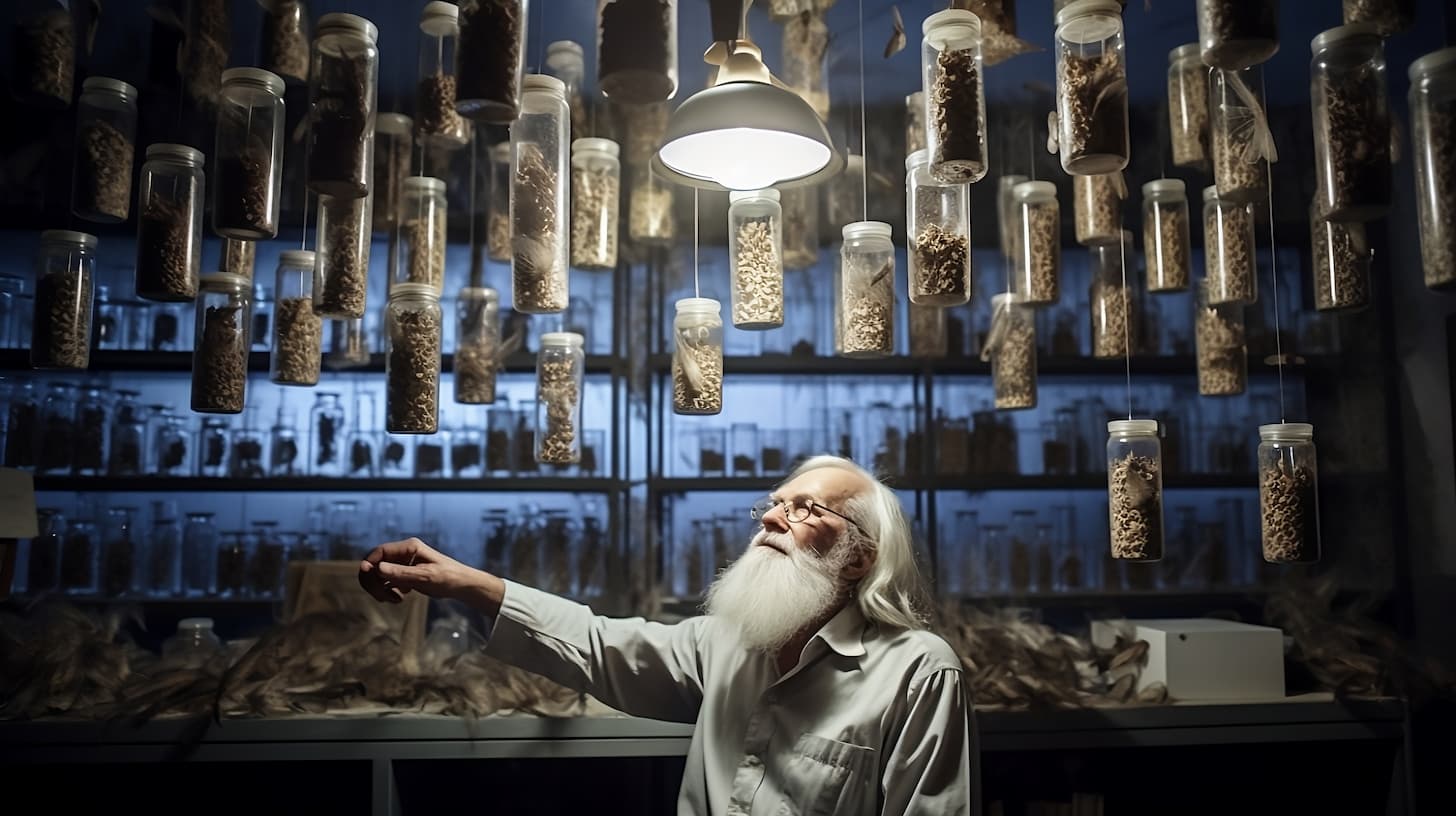

Like the introduction of the internet, Generative A.I. will create a wave of disruption. But that disruption will create a rising tide of opportunities that will play out over the coming decade. In this article, I map out the different opportunity areas and make some predictions about where it’s worth launching your boat.
As usual, all images generated with Midjourney.

We’re often guilty of under-indexing or over-indexing on learning from history. Something I have considered carefully is whether I am over-indexing on my experience of the early internet when thinking about generative AI. Ultimately, I think it’s up to you to decide whether you’re convinced by my analogy, but I would hope as a minimum that you’ll consider what the outcomes might be if the analogy does hold, and which things that happen over the coming months will make it seem more correct, and which less.
So I want to make my case with a personal story about disruption.

In the early 2000s, Australia’s leading newspaper publisher Fairfax created a subsidary Fairfax Digital to house online versions of its products. I was on the first management team for the real estate section Domain. So our job was to try to do something useful with real estate advertising on this new-fangled internet thing.
For the young people reading, there used to be these things called “newspapers”, which were sort of like news sites, but printed out on paper. And there used to be these things called “newsagents”, which were shops that people would go to by newspapers on weekends.
Older people reading - those who lived in Sydney - might remember when Saturday’s Sydney Morning Herald was so thick that they had to split it into two books. And the reason it was so thick was because of the huge amount of real estate advertising, which generated half a billion dollars per annum in revenue for Fairfax.
So we did okay with Domain online, and we grew it to over 40 million annual revenue in 3 years with an EBITDA of more than 50%. At that point we were contributing more than half of Fairfax Digital’s profit, and actually we started make more profit than the print version of Domain, on a fraction of the revenue.
Unsurprisingly, the execs at Fairfax were keen to invest more in us, and asked us for a growth plan. We came back with a plan to grow revenue to 100M, mostly recurring, and maintaining >50% EBITDA. But a key part of the plan was for the newspaper to promote the website, and not the other way around. As weird as it might sound now, at that time the thinking was that the website was a way to promote the newspaper. But what was obvious to us on the digital side, was that before long, searching for somewhere to live was going to be a purely online experience.

So we presented our plan to the Fairfax exec team and stood there in silence facing some concerned and perplexed looks. The CFO broke the silence. He said “So your plan is to replace our current 500M in print revenue with 100M in online revenue?“. And we said “Yes. But only if we win. If we don’t win, that 500M in print revenue will be replaced with zero revenue”.
Now, it’s safe to say with the benefit of hindsight that when the board and exec of Fairfax rejected our plan that they might have made a mistake. But all the analysts were telling them that the downturn in advertising was cyclical and would come back. It wasn’t clear to everyone out there what was plainly obvious to us. Within 18 months, Fairfax’s share price had dived from $5 to 50 cents.

So this is what disruption looks like close up. It was amazing to see professionals - who’s only job was to analyze and make predictions about the newspaper industry - completely fail to see the writing on the wall. Or maybe they did see it, but ignored it - perhaps forecasting the end of their own jobs was not aligned with their interests.
I observe some of the same signs now, with generative AI: a mixture of catastrophizing and denial. A strong sense in the general population that something interesting is happening but people waiting for it to happen directly to them before they take much interest.

But you’re not in denial - you’re convinced something interesting is happening and want to be involved. So where can you locate yourself?
I think about the opportunities in 4 areas:
For this article, I want to focus on the Productisers - if you’re thinking about founding a startup, or moving your product company into this space, then I think that’s were the most opportunities for the most people exist.
So I would further break down the opportunities for developing AI products into three categories:

Many founders I speak to are looking for that breakthrough idea. The killer app that spawns the next billion-dollar unicorn - and perhaps you’re in this category. That’s great, of course, and I wouldn’t want to discourage that path at all. But I would advise caution, especially if your idea depends on a particular technology or technique. The tech and technique landscape is evolving so quickly that many things right now appear to be ephemeral.
So while I’m not discounting the possibility of creating the next unicorn, it’s a path I think that very few people should pursue. I think of it like trying to win the lottery: it’s not something you actually get to decide, rather it’s something that happens to you. And in that sense it’s of limited use studying lottery winners.
Having said all that, there’s been a clear re-invigoration of the investment community recently around AI, so if you are pitching your breakthrough idea now, I would say that your pitch is not badly timed.

Maybe you already have a product, and are wondering if you can make an existing feature better with AI, or add new AI features to create an advantage. It’s clear that there are going to be orders of magnitude more successful examples of this approach, than unicorns. But this doesn’t mean this path is guaranteed to be successful, or that we’re going to have loads of great AI products this year.
If you observe many of the unicorn ideas (that have come and already gone) and disappointing AI features rushed to the market this year, a common characteristic was that the headline is AI, and the actual functionality or value created seemed to be a secondary concern. We need to get through this phase, and on the other side will be a more mature approach to AI product development. Hopefully next year.
My advice for product companies is to investigate how AI can supercharge features. E.g. if you have an existing search feature, can you make it magic with AI? For new AI-based features, look into previously identified needs that have been historically unsolvable. Read that again - the characteristic of historically unsolvable problems is that they are easy to forget and hard to remember! So many times the world experiences a “Duh!” moment when someone applies new technology to an old problem that everyone had just collectively forgotten they had.
So my prediction here is that the more successful product companies over the next 1-2 years will supercharge their products with AI, without losing sight of their core product mission.

Now the third category might sound less sexy, but to me this is absolutely the safest bet, and a monumental tide that will absolutely lift many, many boats over the coming decade and beyond. It’s about using AI in the background to reduce costs. So perhaps founding a new company that uses AI to reduce costs for other businesses, or using AI to cut costs out of your own business.
Now, when people think about ‘cost reduction’ they usually think about cutting down on travel, and stocking the kitchen with less expensive biscuits. Not that! What I’m thinking is automation - in particular the automation of human labour. Absolutely do not sleep on cost reduction - as much as you might want to. Product companies that can use AI to automate labour - either their own or customers - will generate trillions of dollars of economic activity over the coming 5-10 years.

Newspaper classifieds and the majority of all advertising dollars have steadily migrated from offline to online - a process that was still going a decade later - causing trillions and trillions of dollars of disruption and opportunity.
Generative AI is the next rising tide that will sink many large boats, but create opportunities to raise very many more.
If you enjoyed this article, please follow us on LinkedIn for more like it.
Reach out about a problem you have, an opportunity you've
spotted, or an idea that inspires you.
We'd love to hear about it!